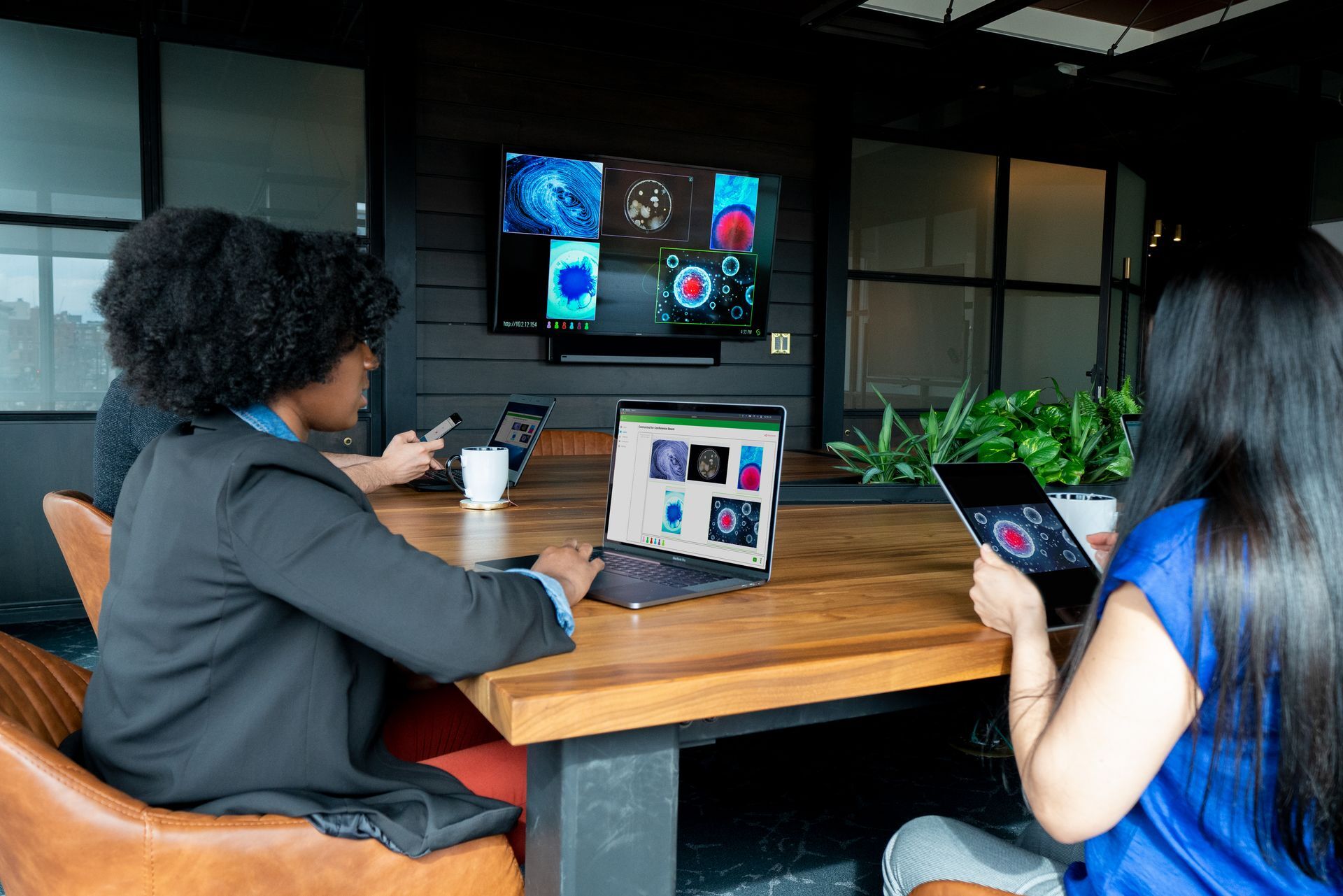We all love innovation and competition when it comes to technology, but as the number of products and services grows, so too does the jargon. Merriam Webster adds an average of over a thousand new words each year, and as the technology landscape continues to grow, more and more new tech words and acronyms seem to pop up every day. It’s no wonder that there’s some confusion over what’s what — including in the content sharing and collaboration technology space.

It’s not a bad thing to have so many new words to define our tech — it shows enthusiasm. Still, when you want to explain how you’re sharing (or mirroring or casting) your screen or explain what you want in a wireless display system, it can be helpful to know just how.
What Is Mirroring, Sharing, and Casting?
Here’s the gist: they all describe showing content from one device on another display. For a deeper dive into the intended meanings behind them, match your needs to the name.
“I want to…
- “…show my exact desktop, laptop, phone, or tablet screen (or an application window of the screen) and all my movements on the screen on another display in the same room.”
This is screen mirroring. - “…play video, music, or other content on another display in the same room.”
This is screen casting (or casting your screen). - “…show my exact desktop, laptop, phone, or tablet screen (or an application window of the screen) on displays in other locations.”
This is screen sharing.
Screen Mirroring: How and When To Use It
“I want to show my exact desktop, laptop, phone, or tablet screen (or an application window of the screen) and all my movements on another display in the same room.”
Screen mirroring duplicates your exact display onto another screen. Wired screen mirroring is still in use — HDMI and the almost-extinct VGA cable — but wireless screen mirroring has been around for years. To mirror your screen, you must have a display such as a TV or a monitor that can receive content wirelessly, using either built-in technology or an adapter.
AirPlay is one of the older technologies, but works only with Apple devices. Miracast is another example of a wireless display technology. Miracast-enabled devices include most modern Windows and Android devices – including tablets, smartphones, and laptops, some connected displays – such as smart TVs, and some streaming devices such as Roku and Amazon Fire TVs.
In the workplace, it is used in meetings and features its own group of products tailored for its use, including Mersive’s Solstice collaboration platform. Solstice also supports screen mirroring through AirPlay and Miracast.
Here is where it gets tricky: there are some devices that allow both.
Learn More: The Top 4 Screen Mirroring Devices for Meeting Spaces
Screen Casting: How and When To Use It
“I want to play video, music, or other content on another display in the same room.”
Screen casting is different in two ways. When you’re casting to another display, you’re not mirroring the screen of your device. You can cast a video to another display and still use your device, often a phone or tablet, without interrupting the video or showing any of your other content. When you cast content from your phone to a TV, you will no longer see the content on your phone. It will only appear on the TV.
Additionally, the content is not played from your phone or tablet. The device connected to the display (Google’s Chromecast, for example) downloads and plays the content on the TV. Once you have screen cast the content to the TV, you will need to control it from the TV and not your phone or personal device.
The term “casting” as it is currently used grew in popularity largely after the launch of Chromecast, and it quickly became the standard term for playing content on your TV from an app on your mobile device. Google’s Chromecast is one of the most popular streaming devices that is capable of casting and can be built into any number of apps.
Learn About Solstice Screen Casting
Screen Sharing: How and When To Use It
“I want to show my exact desktop, laptop, phone, or tablet screen (or an application window of the screen) on displays in other locations.”
Screen sharing is basically the same, except it generally refers to mirroring your screen on another person’s display, whether a laptop, desktop, or mobile device. Screen sharing can be done remotely, and it requires that both the sender and receiver have the same software or compatible systems.
With screen sharing in this sense, the mirrored screen is generally contained with an application window rather than taking over the entire external display. Screen sharing has become an important part of the workplace — with the rise of remote work and businesses operating internationally, it’s become commonplace to collaborate wirelessly, logging into meetings and working together on a project without being in the same room.
Screen sharing isn’t limited to just mirroring a display across multiple remote locations. Many software and hardware solutions allow a meeting to take place in one location and have remote workers sign in to view — and interact with — the shared screen. Mersive’s video conferencing integration enables rich multi-participant content sharing for both onsite and remote workers through any major video conferencing service, improving meeting productivity and engagement for all participants.
Got the Picture?
These definitions aren’t hard and fast rules. Language evolves, and these new words are still finding their way. If someone says they’re “casting” their screen in a meeting to a large in-room display, there’s no need to step in and say, “That’s screen mirroring.”
However, learning the common usage of the terminology can not only help you better understand the technology, but make better decisions in selecting a screen sharing, mirroring, or casting solution.
Want To Learn More About Wireless Display Sharing?
Mersive Solstice supports a wide array of wireless – and wired – display sharing options, including content sharing through the Solstice app, Airplay, Miracast, web browsers, and HDMI-in cable.
We have solutions for every type and size of meeting space. Looking for a solution for your space?
